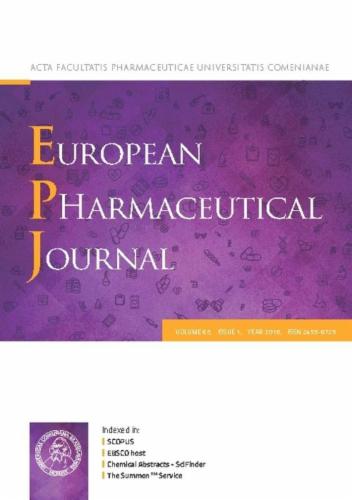优化的PLGA包封SA-2纳米混悬液在小鼠高眼压微珠闭塞模型中表现出持续的眼压降低。
IF 4.3
3区 医学
Q1 PHARMACOLOGY & PHARMACY
引用次数: 0
摘要
原发性开角型青光眼(POAG)视网膜神经节细胞(RGCs)的结构和功能损伤与眼压升高有关。局部IOP降低药物提供短期缓解,需要频繁给药。此外,不坚持频繁滴眼液的使用会显著导致视野丧失,并使疾病结果恶化。我们优化了聚乳酸-羟基乙酸(PLGA)纳米颗粒包封复合抗氧化剂-一氧化氮供体SA-2 (SA-2NP),研究了其生物利用度、降低眼压的持续时间以及对高眼压微珠模型(OHT)视网膜功能的影响。单次滴眼液后1、8和24小时,SA-2在前段和后段均有生物利用。在C57BL/6J小鼠中,每周滴眼液3周后,SA-2NP显著降低IOP(~ 25-34%),并保持RGC功能。综上所述,优化后的SA-2NP配方在小鼠OHT微珠闭塞模型中具有理想的生物利用度、眼部安全性和长期降低眼压的功效。本文章由计算机程序翻译,如有差异,请以英文原文为准。

Optimized PLGA encapsulated SA-2 nanosuspension exhibits sustained intraocular pressure reduction in the mouse microbead occlusion model of ocular hypertension
Elevated intraocular pressure (IOP) is implicated in the structural and functional damage to the retinal ganglion cells (RGCs) in primary open-angle glaucoma (POAG). Topical IOP lowering agents provide short-term relief, necessitating frequent dosing. Moreover, non-adherence to frequent eyedrops administration contributes significantly to visual field loss and worsens the disease outcome. We optimized the poly (lactic-co-glycolic acid) (PLGA) nanoparticles encapsulation of hybrid antioxidant-nitric oxide donor SA-2 (SA-2NP), investigated its bioavailability, duration of IOP lowering efficacy, and effects on retinal function in the microbead model of ocular hypertension (OHT).
SA-2 was bioavailable in the anterior and posterior segments after 1, 8, and 24 h post-single topical eyedrop administration. SA-2NP significantly lowered IOP (∼25–34%) and preserved the RGC function after weekly eyedrop administration for 3 weeks in C57BL/6J mice. In conclusion, the optimized SA-2NP formulation demonstrated optimal bioavailability, ocular safety, and prolonged IOP-lowering efficacy in the mouse microbead occlusion model of OHT.
求助全文
通过发布文献求助,成功后即可免费获取论文全文。
去求助
来源期刊
CiteScore
9.60
自引率
2.20%
发文量
248
审稿时长
50 days
期刊介绍:
The journal publishes research articles, review articles and scientific commentaries on all aspects of the pharmaceutical sciences with emphasis on conceptual novelty and scientific quality. The Editors welcome articles in this multidisciplinary field, with a focus on topics relevant for drug discovery and development.
More specifically, the Journal publishes reports on medicinal chemistry, pharmacology, drug absorption and metabolism, pharmacokinetics and pharmacodynamics, pharmaceutical and biomedical analysis, drug delivery (including gene delivery), drug targeting, pharmaceutical technology, pharmaceutical biotechnology and clinical drug evaluation. The journal will typically not give priority to manuscripts focusing primarily on organic synthesis, natural products, adaptation of analytical approaches, or discussions pertaining to drug policy making.
Scientific commentaries and review articles are generally by invitation only or by consent of the Editors. Proceedings of scientific meetings may be published as special issues or supplements to the Journal.

 求助内容:
求助内容: 应助结果提醒方式:
应助结果提醒方式:


